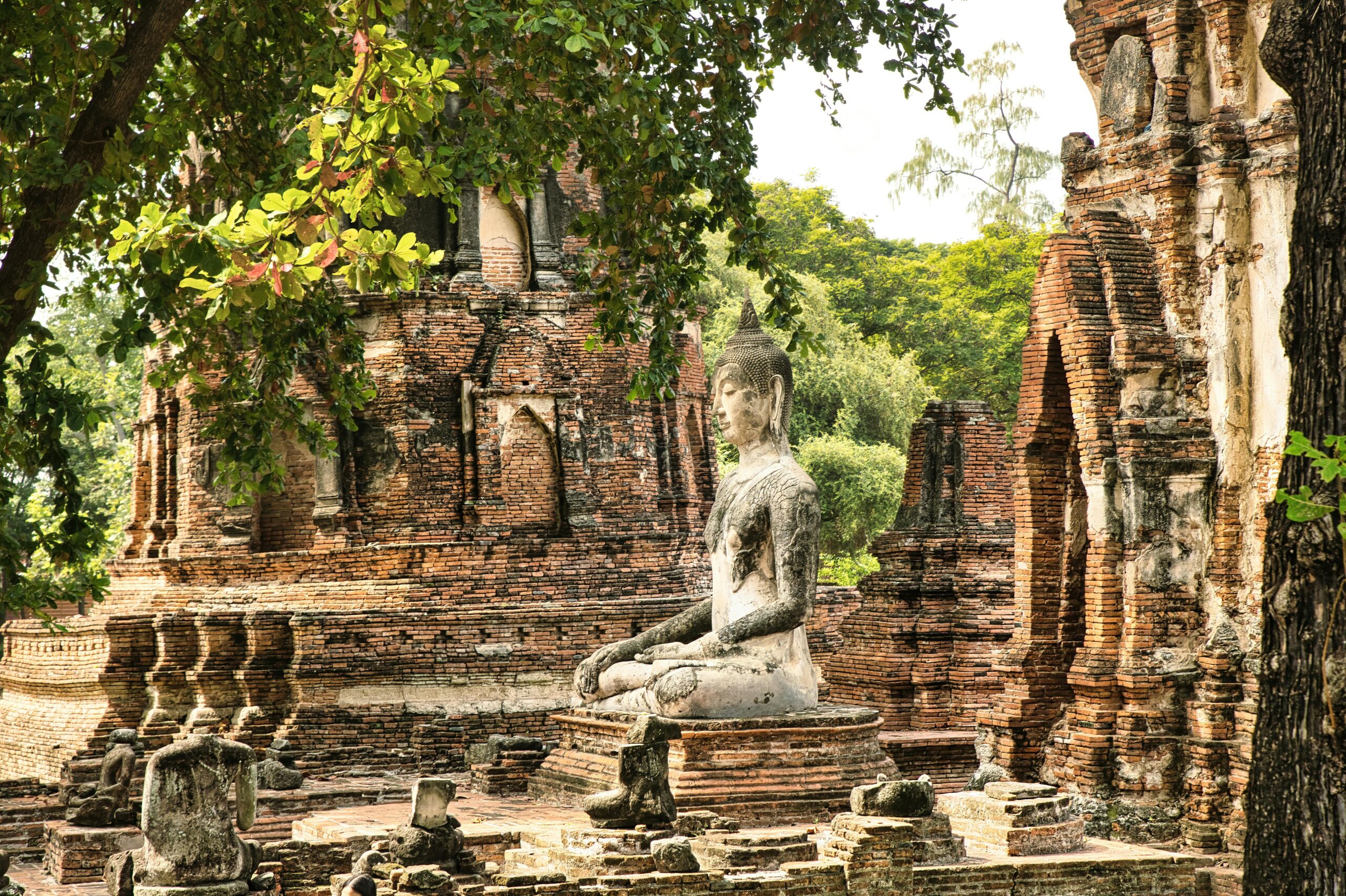Ayutthaya Historical Park: A Journey Through Thailand’s Glorious Past
Nestled 80 kilometers north of Bangkok, the Ayutthaya Historical Park stands as a hauntingly beautiful testament to Thailand’s golden age. Once the capital of the Siamese Kingdom from 1351 to 1767, this UNESCO World Heritage Site is a labyrinth of crumbling temples, towering Buddha statues, and moss-covered ruins. The park’s evocative atmosphere invites visitors to step back in time, exploring the remnants of a city that was once among the wealthiest and most cosmopolitan in Asia. This article delves into Ayutthaya’s rise as a political and cultural powerhouse, its architectural innovations, the multicultural influences that shaped it, and the enduring legacy of its tragic fall. Prepare to uncover the stories etched into every brick and relic of this ancient wonder.
The Rise of the Ayutthaya Kingdom
Founded by King U Thong in 1351, Ayutthaya strategically positioned itself at the confluence of three rivers, enabling control over regional trade routes. Over four centuries, it grew into a thriving metropolis, leveraging diplomacy and military prowess to dominate neighboring states like Sukhothai and Angkor. The kingdom’s “mandala” system of governance—a network of semi-autonomous tributary states—allowed it to expand without direct centralization. By the 17th century, Ayutthaya had become a global hub, attracting merchants from Persia, China, Japan, and Europe. Its wealth was legendary: foreign accounts describe palaces sheathed in gold and bustling markets filled with silks, spices, and exotic animals.
Architectural Marvels: Where Divinity Met Ingenuity
Ayutthaya’s skyline was defined by its prang (reliquary towers) and chedi (stupas), blending Khmer, Sri Lankan, and Sukhothai styles. Key structures include:
- Wat Mahathat: Home to the iconic Buddha head entwined in tree roots, symbolizing nature’s reclamation of human ambition.
- Wat Phra Si Sanphet: The royal temple’s three bell-shaped chedis housed ashes of Ayutthaya’s kings.
- Wat Chaiwatthanaram: A Khmer-inspired complex reflecting Mount Meru, built to commemorate a queen mother.
Builders used durable laterite bases with brick-and-stucco finishes, while intricate murals and gold leaf adorned interiors—techniques showcasing advanced engineering and artistry.
A Cultural Melting Pot
Ayutthaya’s cosmopolitan ethos is evident in its art and religious practices. Persian-inspired floral motifs adorned temple walls, while Chinese porcelain fragments found in excavations hint at thriving trade. European accounts, like those of French diplomat Simon de la Loubère, marveled at the blend of Theravada Buddhism with Hindu rituals. The kingdom even had a Japanese quarter and allowed Portuguese merchants to establish settlements. This cultural fusion extended to governance: King Narai (1656–1688) employed Greek adventurer Constantine Phaulkon as his advisor, illustrating Ayutthaya’s openness to global influences.
Fall and Preservation: From Ashes to Heritage
In 1767, Burmese forces razed Ayutthaya after a 14-month siege, burning libraries, melting gold artifacts, and decapitating Buddha statues. The city was abandoned, its ruins pillaged for materials. Rediscovered in the 19th century, systematic restoration began in the 1950s. UNESCO’s 1991 designation spurred conservation efforts, though challenges persist: flooding erodes foundations, and tourism pressures strain fragile structures. Modern initiatives, like 3D scanning of ruins, aim to balance preservation with accessibility, ensuring Ayutthaya’s story endures for future generations.
Conclusion: Echoes of Eternity in Ayutthaya’s Ruins
Ayutthaya Historical Park is more than a collection of ruins—it’s a narrative etched in stone, revealing the ambitions, artistry, and adaptability of a lost civilization. From its strategic rise as a trading giant to its architectural synthesis of diverse cultures, the park encapsulates Southeast Asia’s dynamic history. The scars of its destruction serve as poignant reminders of impermanence, while ongoing preservation efforts highlight humanity’s drive to reclaim memory. For travelers, Ayutthaya offers not just a glimpse into the past, but a meditation on resilience. As sunlight filters through broken stupas and wind whispers through ancient bricks, the spirit of a kingdom that once rivaled Paris and Kyoto lingers, timeless and profound.
